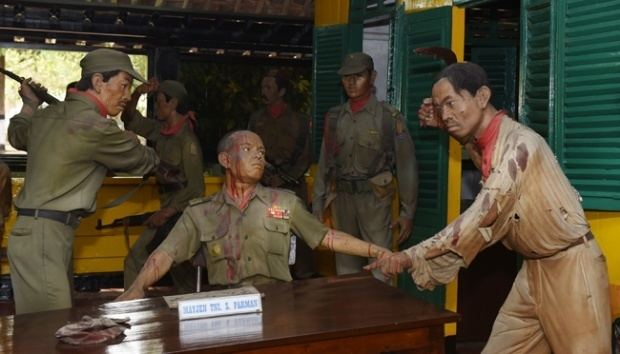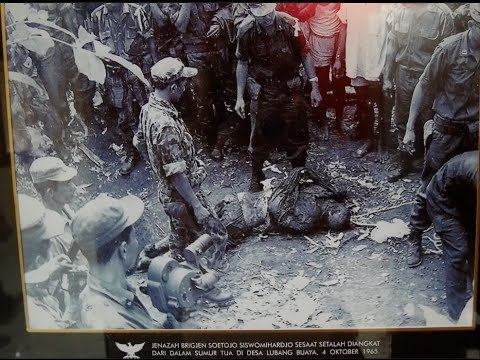 | ||
Wanita lubang buaya minawaty dewi official music video
Lubang Buaya (literally "crocodile's pit") is the suburb on the South East part of Jakarta which is also the site of the murder of seven Indonesian army officers during the 1 October coup attempt of the 30 September Movement. It is located on the outskirts of Jakarta near the Halim Perdanakusumah Air Force Base.
Contents
History
On 31 May 1965, President Sukarno called for the establishment of a "fifth force", in addition to the three existing armed forces (Army, Navy and Air Force) and the police, to be made up of workers and peasants. This attracted strong opposition from Army commander Ahmad Yani, but soon training commenced at the swampy region near Halim called Lubang Buaya. It was under the control of Major Sujono, commander of the Halim base ground defense. Among the participants were members of the PKI-affiliated youth group Pemuda Rakyat.

In the early hours of 1 October 1965, members of the 30 September Movement, left their base at Lubang Buaya on a mission to kidnap seven generals, all members of the Army General Staff. Later that night, they returned bringing the bodies of three of the generals who had been killed in the kidnap attempts as well as four living prisoners. The survivors were subsequently killed, and all seven bodies thrown down a disused well.
On 4 October, the bodies were recovered using special equipment. Suharto personally supervised the operation.

During the New Order regime, a ceremony attended by the president and senior officials was held every year on 1 October.
The Monument and Museums

The New Order regime built a large monument, which opened in 1969, called the "Sacred Pancasila Monument". It comprises life-size bronze statues of : (from left to right)

Behind them is a 17m high structure with a large bronze Garuda, the symbol of the Indonesian nation,. The front of the platform is covered with a bronze frieze that tells the official government version of the actions of the Indonesian Communist Party (PKI) since Indonesian independence.
Nearby there is a "Museum of PKI Treason", which was built in 1990. It contains 34 dioramas portraying acts allegedly committed by the PKI. There is also a "Sacred Pancasila Museum" opened by then President Suharto on 1 October 1981 containing another 9 dioramas of the events before and after the coup attempt, relics such as an aqualung used during the recovery of the bodies from the well, a theater and an exhibition of photographs.
The well into which the bodies were thrown is now protected by a pavilion. A small plaque reads:
"It is not possible that the aspirations of our struggle to uphold the purity of Pancasila will be defeated by merely burying us in this well.
Lubang Buaya 1 October 1965".
There are a number of other buildings in the vicinity, including the one in which the kidnapped generals were allegedly mistreated (containing a life-sized diorama of torture), the movement's command post and a canteen.
Finally, there are four vehicles: Yani's official car, the jeep Suharto used at the time, a truck used by the kidnappers and a Saracen armored car used to transport the bodies away from the scene after they had been recovered.
